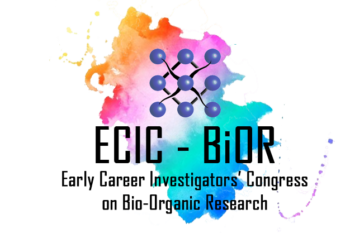How can the in silico methods speedup the drug discovery process?
In silico methods are innovative tools available in several scientific fields. In Medicinal Chemistry they are also widely diffused and, if combined to advanced techniques in structural biology, they can configure the so-called rational approaches to drug discovery. Actually, they can speed up dramatically the identification of novel bioactive compounds, because are able to process a huge number of compounds also up to millions of chemical entities [1].
Recently, the poly-pharmacology paradigm opens new perspectives to revaluate them by means of a different approach i.e. considering the interaction with two or more macromolecular targets and consequently exerting specific therapeutic goals in a synergic fashion [2]. The repurposing issue is also an outcome of this concept, particularly desired against SARS-CoV-2 in the last years.
The combination of advanced computational tools and the multi-targeting drug discovery paradigm can be well translated to the revaluation of beneficial properties of natural compounds, whose bioactive components should be the scientific basis of modern nutraceuticals.
In this communication some recent insights will be presented, including success stories and currently running research projects carried out by the cooperation of an academic research team involved in a young spinoff and a non-profit research center focusing on natural compounds [3] and other derivatives [4].
- Artese A, Alcaro S, Moraca F, Reina R, Ventura M, Costantino G, Beccari A.R, Ortuso F. State-of-the-art and dissemination of computational tools for drug-design purposes: A survey among Italian academics and industrial institutions. Future Medicinal Chemistry 5 (2013), 907-927, doi: 10.4155/fmc.13.59
- Alcaro S, Ortuso F. Multi-target drug discovery: An opportunity for novel and repurposed bioactive compounds. Eur J Med Chem. 92 (2020) 112188, doi: 10.1016/j.ejmech.2020.112188.
- Ambrosio FA, Coricello A, Costa G, Lupia A, Micaelli M, Marchesi N, Sala F, Pascale A, Rossi D, Vasile F, Alcaro S, Collina S. Identification of Compounds Targeting HuD. Another Brick in the Wall of Neurodegenerative Disease Treatment. J Med Chem. 64 (2021) 9989-10000, doi: 10.1021/acs.jmedchem.1c00191.
- Fuentes-Aguilar A, González-Bakker A, Jovanović M, Stojanov SJ, Puerta A, Gargano A, Dinić J, Vega-Báez JL, Merino-Montiel P, Montiel-Smith S, Alcaro S, Nocentini A, Pešić M, Supuran CT, Padrón JM, Fernández-Bolaños JG, López Ó. Coumarins-lipophilic cations conjugates: Efficient mitocans targeting carbonic anhydrases. Bioorg Chem. 145 (2024) 107168, doi: 10.1016/j.bioorg.2024.107168.
Dr. Stefano Alcaro has spent a postdoctoral period at Columbia University in the Chemistry lab of Prof. Clark Still and visited the Prof. Robert S. Coleman’s lab at the Ohio-State University. He started the academic carrier in Catanzaro (Italy), where from 2011 he is full professor of Medicinal Chemistry, coordinating the Life Science PhD programme at UMG for last ten years and chairing the H2020 COST Action MuTaLig CA15135. He has co-founded the Net4Science academic spinoff at UMG and guided the Paul Ehrlich Euro-PhD Network for four years. His scientific interests are related to the development of new molecular modeling tools useful in the drug discovery process and to the application of in silico methods mainly in the rational design of anticancer and antiviral agents or nutraceuticals, endowed with multi-targeting mechanism of action. He has authored more than 300 articles in peer-reviewed journals and several book chapters. During pandemic he has proposed a new didactic teaching approach ending up with the creation of the MedChemBlog at UMG.

